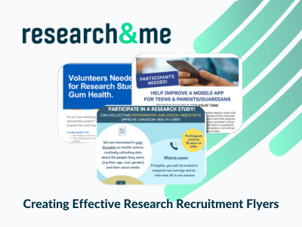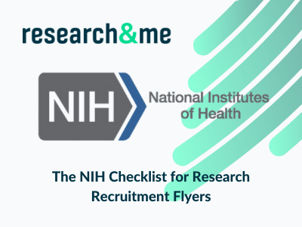September 25, 2025


Written By:
Ryan B
If you’re a graduate student or early-career researcher, chances are you’ll eventually need to recruit human participants for your study. For many, this is an entirely new challenge. Unlike designing your study or analyzing data, participant recruitment isn’t something most PhD programs explicitly teach — yet it’s one of the most critical steps in the research process.
This guide will walk you through how recruiters and agencies find participants, what strategies actually work, and how you can borrow some of these methods for your own dissertation or research project.
Without participants, research doesn’t happen. Whether you’re running a psychology experiment, a clinical trial, or a simple online survey, recruitment is the bridge between your research design and your actual data.
Effective recruitment ensures:
You meet your sample size goals
Your data are valid and representative
You finish your project on time (and with less stress!)
Professional recruiters and agencies have developed proven systems to find the right people for studies. As a new researcher, you can adapt many of these strategies yourself.
Still one of the simplest, most effective tools. A clear, well-designed flyer placed in the right location can catch the eye of your target audience.
Academic researchers often post on campus, in libraries, or department bulletin boards.
Agencies post in community centers, gyms, coffee shops, or clinics.
👉 Tip: Keep it simple — who you need, what’s involved, compensation, and how to sign up.
(Pro tip: Tools like the Research And Me Flyer Generator let you create IRB-friendly flyers in minutes.)
Agencies increasingly rely on digital platforms to reach participants quickly.
Facebook and Instagram ads allow targeting by location, age, or interest.
Research-specific platforms (like Research And Me) connect researchers directly with people who are already interested in participating.
University mailing lists and student portals can work well for graduate students.
Many agencies maintain panels — large databases of people who have signed up to participate in research.
Participants are pre-screened for demographics, health conditions, or interests.
When a new study opens, recruiters invite relevant participants.
As a grad student, you might not have access to an agency panel, but you can start your own mini-database: ask participants if they’d like to hear about future studies and keep a simple contact list.
Sometimes recruitment requires leaving the lab (or your laptop) and meeting people where they are.
Agencies often partner with churches, local organizations, or clinics.
Researchers can collaborate with student clubs, community centers, or nonprofit groups.
This method builds trust — especially important if you’re working with vulnerable or hard-to-reach populations.
Recruiters know that participants often know other potential participants.
Agencies may offer referral incentives (“Bring a friend and earn $10”).
Researchers can politely ask current participants if they know others who qualify.
Even professional recruiters face hurdles:
Low response rates → Try multiple channels (flyers, online ads, community outreach).
No-shows → Use reminders (email/text) and offer clear instructions.
Hard-to-reach populations → Partner with trusted community groups.
If you’re new to human subject recruitment, remember:
Recruitment is as important as your research design.
Use multiple strategies — don’t rely on just one.
Keep messaging clear, ethical, and IRB-approved.
Save time with tools — the Research And Me Flyer Generator is a great starting point.
Professional agencies use flyers, databases, social media, and community networks to fill studies quickly. As a student researcher, you can borrow these same strategies — just on a smaller scale. By thinking like a recruiter, you’ll save yourself time, reduce stress, and increase your chances of successfully completing your project.
Recruitment may feel overwhelming at first, but with the right tools and a bit of creativity, you can absolutely do it.

July 16, 2025
If you're a PhD student conducting research with human participants, chances are you’ll need a dissertation recruitment flyer at some point. A good flyer can make the difference between struggling to...
Read More
August 16, 2023
How to Create Effective Research Recruitment Flyers By following these tips below, you can create research recruitment flyers that will help you attract more participants. Remember 1) keep your flyer...
Read More
August 16, 2023
As science and health communicators, our main goal is to share our institutions’ wealth of science and health knowledge. We strive to make the information accessible to a broad range of people — from...
Read More